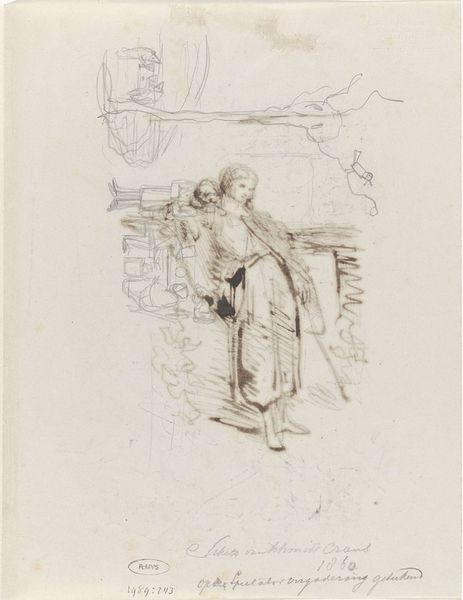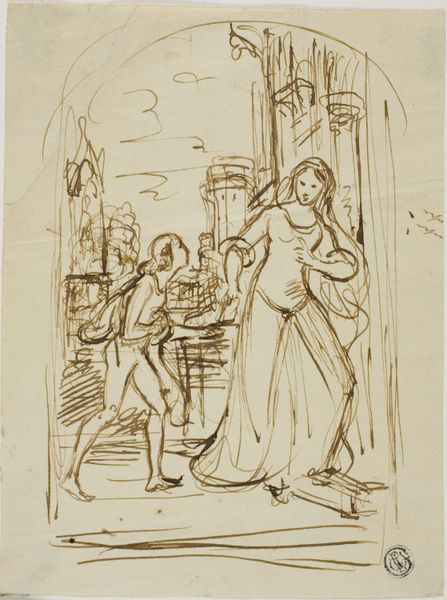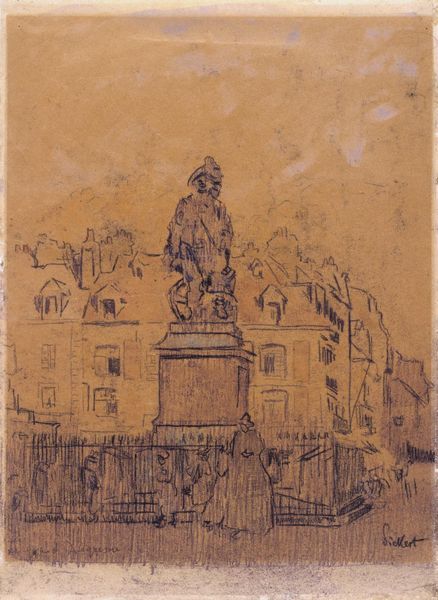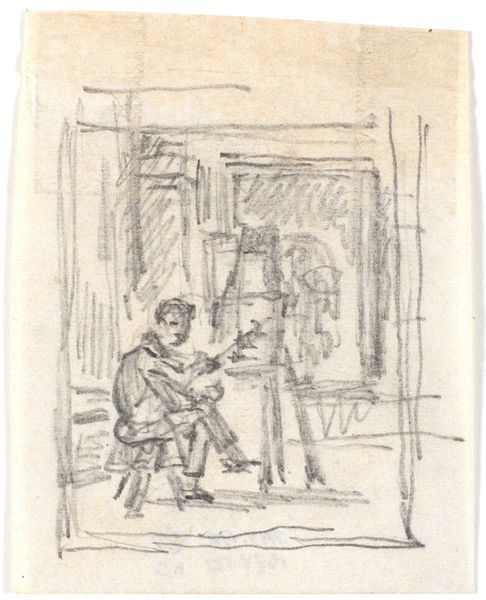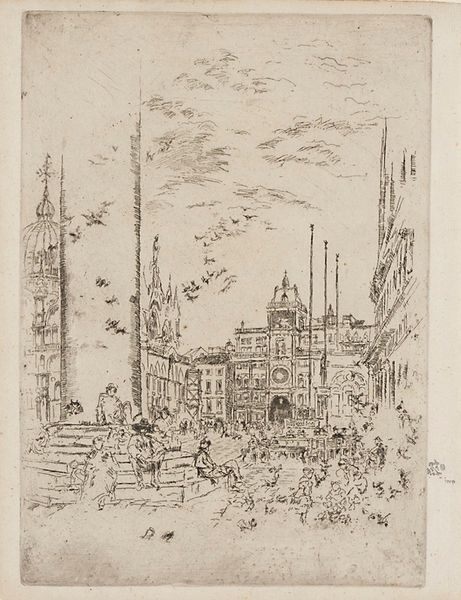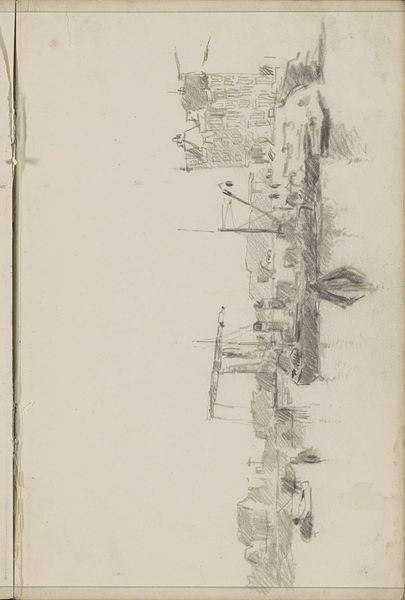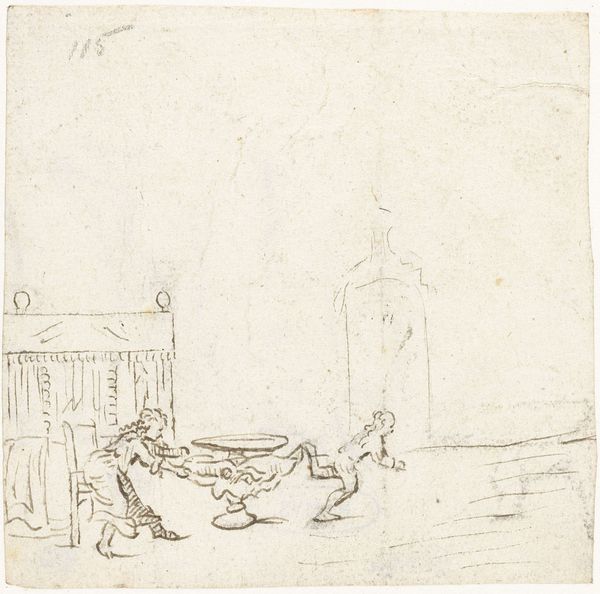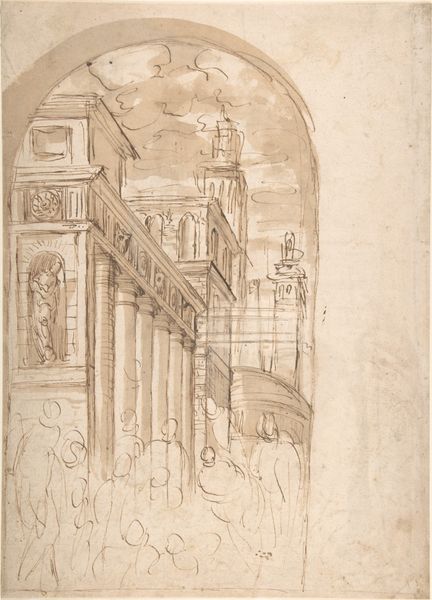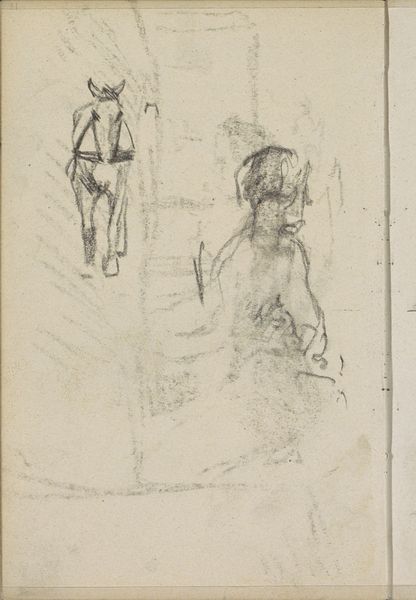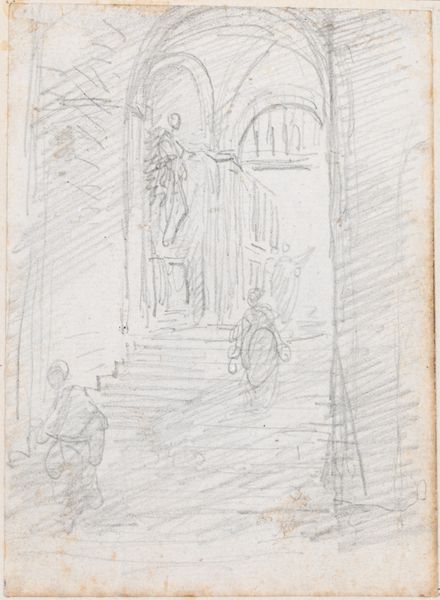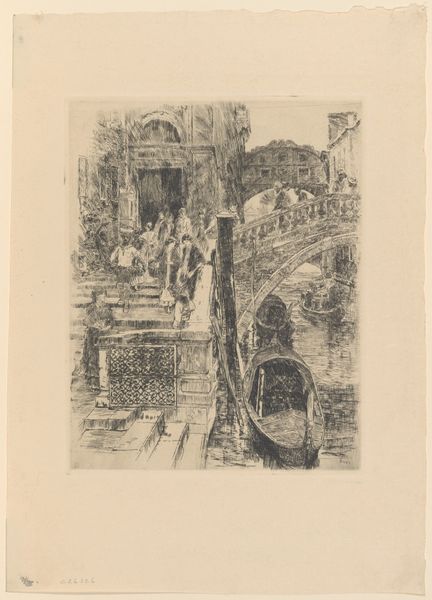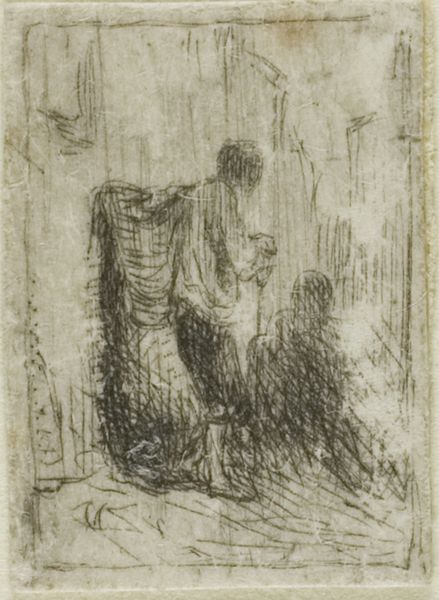
Komposition: Udsigt gennem en port, til hvis væg en svend med spyd læner sig til et torv med en kirke (vistnok tegnet med erindring om St. Knud, Odense) 1840s
0:00
0:00
drawing, ink
#
drawing
#
ink drawing
#
landscape
#
etching
#
ink
#
romanticism
#
cityscape
Dimensions: 211 mm (height) x 172 mm (width) (bladmaal)
Editor: Here we have "Komposition: Udsigt gennem en port..." from the 1840s, made with ink by Dankvart Dreyer. There's this guard, seemingly bored, leaning by a gate, while everyday life unfolds behind him. It's all very sepia-toned and sketch-like. How do you see this artwork functioning within the scope of Romanticism? Curator: It's fascinating how Dreyer uses this seemingly simple city view to engage with deeper questions about societal power structures, and the role of the individual within them. Think about the figure of the guard. He is positioned at the intersection of public and private space, seemingly controlling access, yet also appearing marginalized – almost melancholic – in his posture. What does that say about authority during the 1840s? Editor: So, not just a guy guarding a gate, but maybe representing anxieties about power and individual agency? Curator: Precisely! Consider also that the cityscape in the background seems to recall the Odense Cathedral; by doing so Dreyer interjects questions related to national and religious identity. How do those forms, viewed through the architecture of power in the foreground, then complicate our reading of Romanticism beyond just landscapes and emotions? Editor: I didn’t catch the religious angle. The way you frame it, the drawing's really not just about a pretty view, it becomes a social commentary. Curator: Indeed! Dreyer prompts us to think about how architecture and figures create narrative. His choices emphasize a sense of spatial and social separation, inviting viewers to question the prevailing norms and dynamics of 19th-century Danish society. Editor: That completely changes my view of what’s happening. It’s amazing to think about how a simple ink drawing can contain so many layers of socio-political meanings. Curator: Exactly! Art is never truly "simple", it's often a reflection of larger conversations that echo far beyond the canvas or page.
Comments
No comments
Be the first to comment and join the conversation on the ultimate creative platform.

